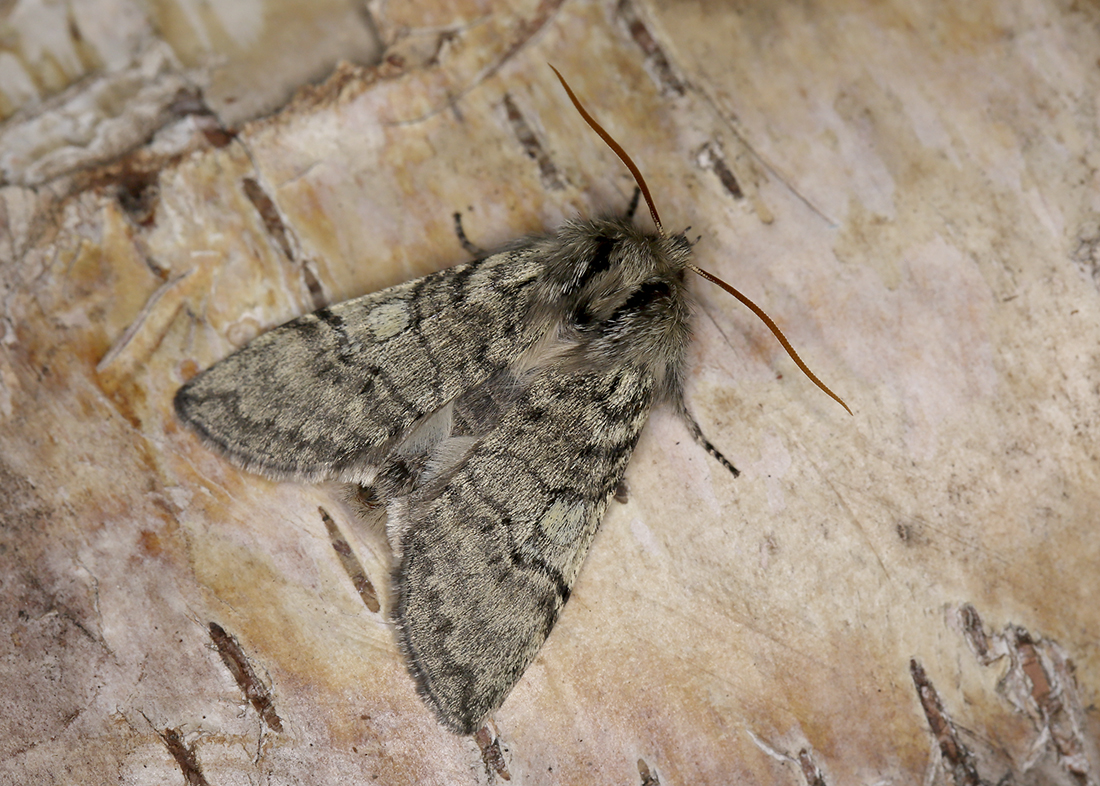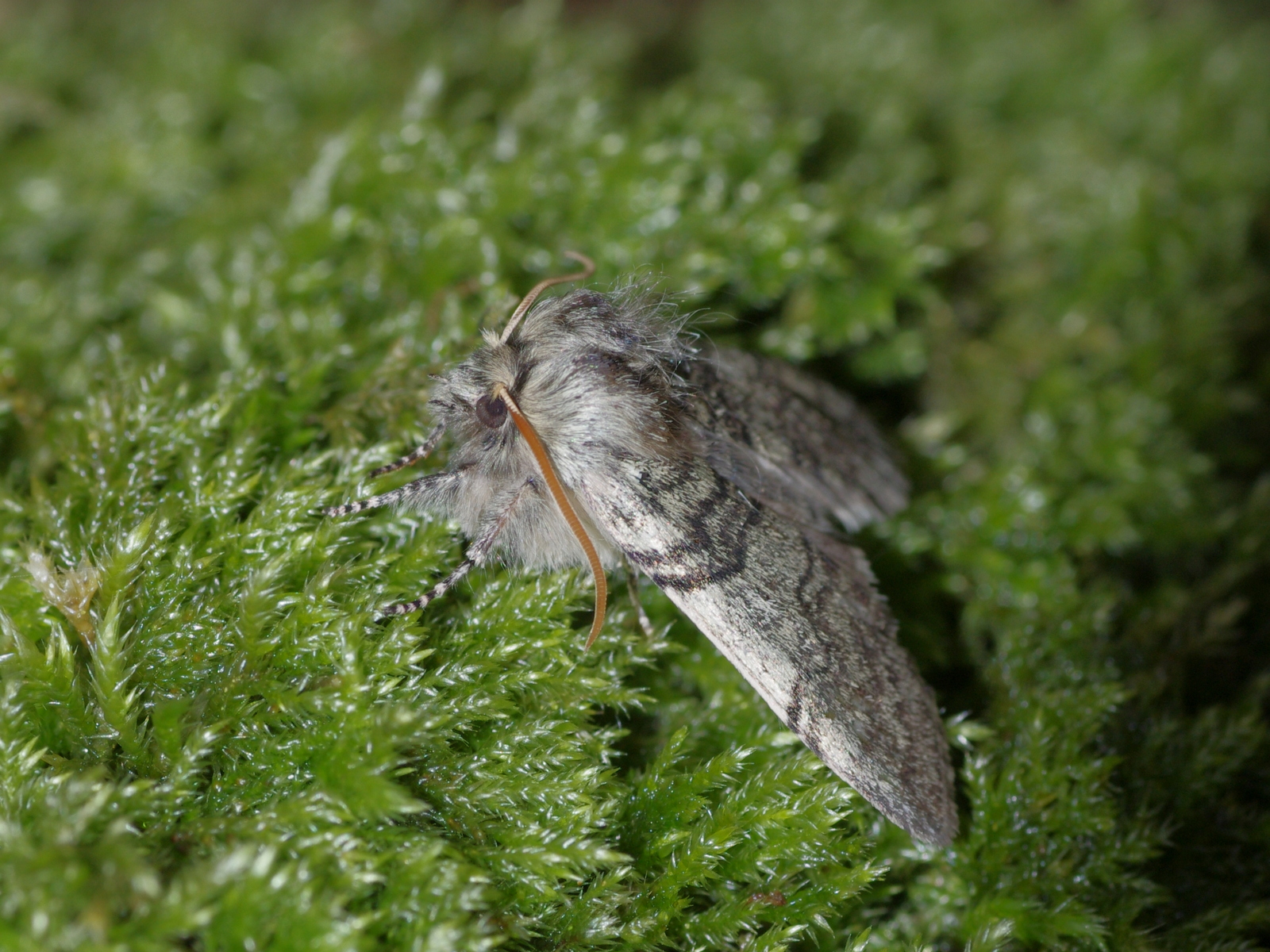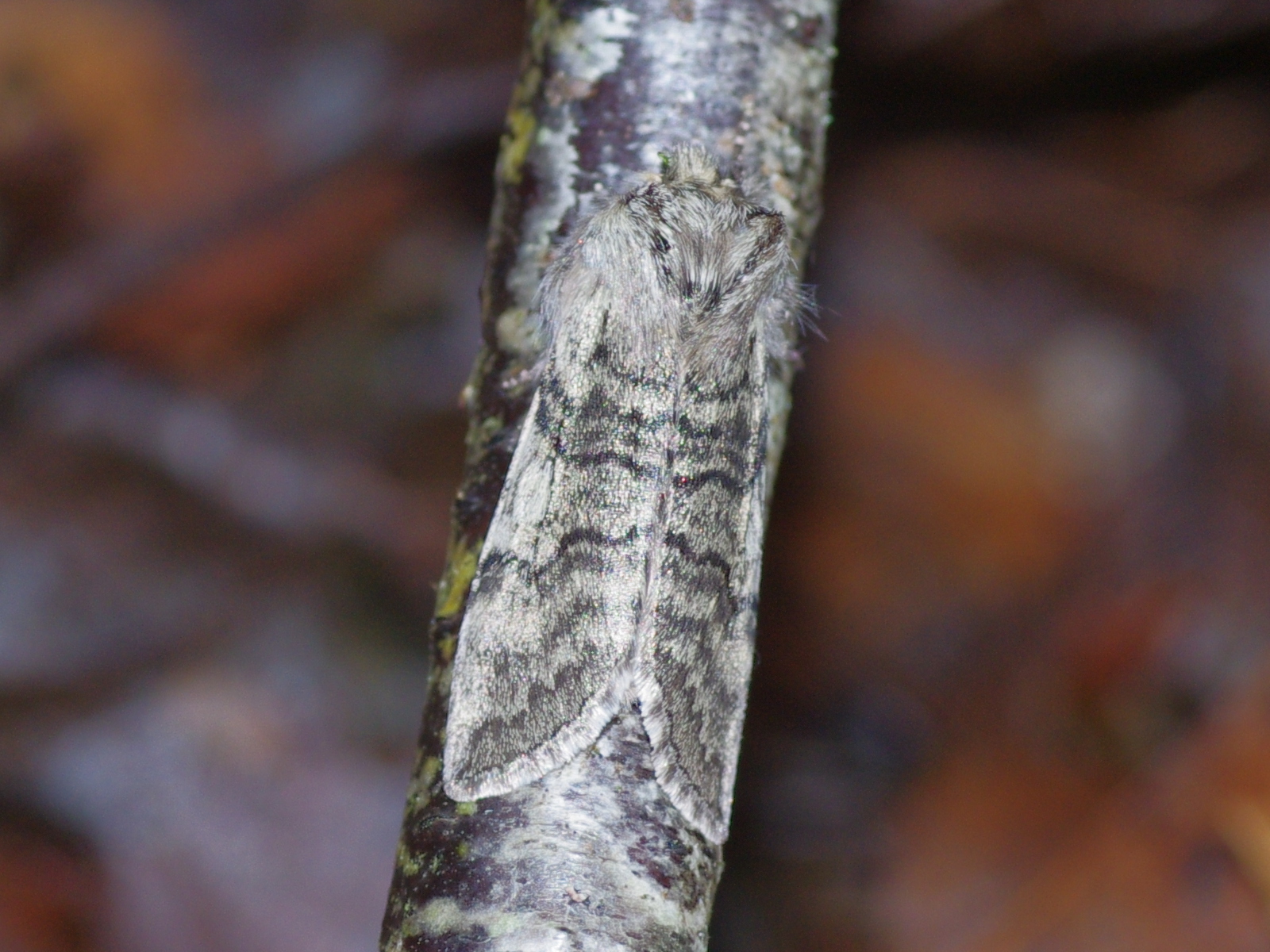Identification
So named through having distinctive orange antennae.
Life cycle
One generation. Overwinters as a pupa, in a cocoon in leaf-litter on the ground. Larvae are present mid-May to mid-July.
Larval foodplants
Downy Birch and Silver Birch.
Habitat
Woodland and moorland where the larval foodplants are found.
History 1860-2010
W. Douglas Robinson (1870-71) first recorded it for the region when he found two at sugar in July on Almorness (VC73). The Gordon brothers found had it common at light in the early 1900s.
Sir Arthur Duncan (1909-84) during his lifetime had found it at Closeburn, Tynron and Castlehill, Dumfries (all VC72).
During 1974-88 four of the Rothamsted stations contributed 21 records between them. But since then, from 1992 to 2010, the moth has appeared at regular trapped sites at Bargaly Lodge, Carsfad at Dalry, Stroan Wood and Caldons Wood, Kirkconnell Flow (VC73) and Durisdeer (VC72), with just one record in Wigtownshire at Forest Moor.
Which subspecies occurs here is unclear.












